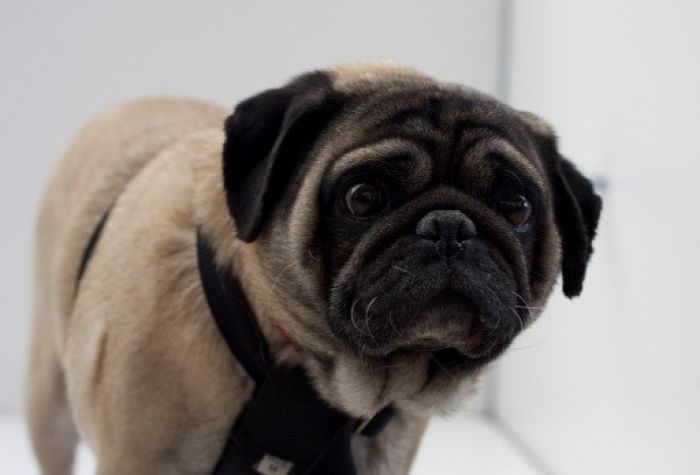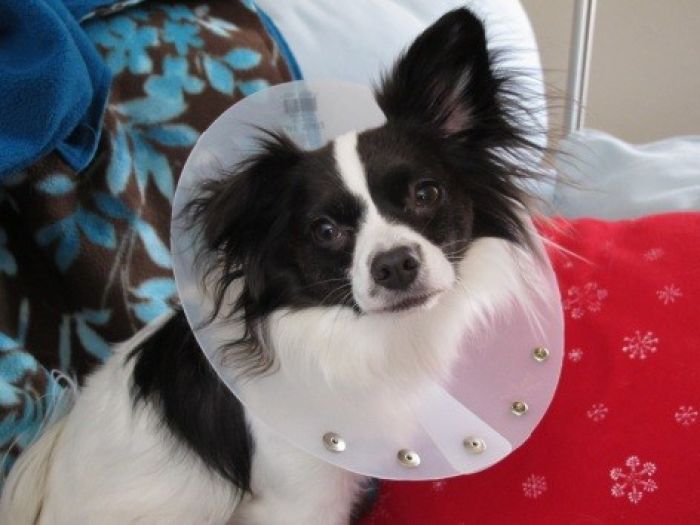
Pedigree animals, though desirable, are often prone to health complications. These complications tend to be the result of generations of inbreeding as a means to get around low numbers of truly pedigree cats or dogs, or from selective breeding, where animals are chosen for their physical attributes, which can lead to complications. The problems are usually there from birth.
Here are some common health issues with pedigree animals:
1) Brachycephalic Airway Obstruction Syndrome
In some pedigree animals, mainly dogs with short snouts, a condition known as brachycephalic airway obstruction syndrome, or BAOS, is common. Animals with this condition suffer from difficulty in breathing due to an excess of soft tissue in the muzzle.
This condition can be progressive, and may eventually result in the larynx and trachea collapsing. Sometimes, surgery is required to ease the breathing difficulties.
This problem is most evident in Pekingese, but can be found in other animals with a short snout, such as an English Bull dog, or a Pug.
2) Chondrodystrophia
There is a condition called chondrodystrophia, which certain animals have, and are actually bred because of this fact. The condition results in stunted growth in the legs as a result of the cartilage maturing abnormally, and the bones fusing early.
Animals with this condition tend to develop short, curved legs, and are very susceptible to spinal injury. Neurological problems can also develop as a result of the nerve disruption, which may lead to walking more difficulty walking and, in extreme cases, complete paralysis.
This condition is relatively common in Basset Hounds, Shih Tzu, Dachshund, and Lucas Terriers.
3) Hip Dysplasia
One of the most recognised musculoskeletal problems in dogs, hip dysplasia causes the hip joint of the animal to form abnormally, causing immense pain and difficulties in walking.
Hip dysplasia seems to be more common in larger dogs.
Look out for this condition in animals like St Bernards, Bulldogs, Rottweilers, Golden Retrievers, German Shepherds, and other breeds of large dog.
4) Elbow Dysplasia
Similar to hip dysplasia, elbow dysplasia is when the elbow joint forms abnormally, and results in much the same symptoms - arthritis, pain, walking difficulties - as hip dysplasia
Breeds at risk of elbow dysplasia are, for the most part, the same breeds as those at risk of hip dysplasia.
5) Cephalopelvic Disproportion
Certain animals are deliberately bred for their large heads. Unfortunately, this can result in difficulties giving birth, often needing surgical intervention to ensure a safe birth. The problem is exacerbated by the fact that the animals often have narrow pelvis and broad shoulders, making both the birthing region smaller, and the offspring larger.
In the more serious cases, birth is impossible without a Caesarean section.
This problem tends to occur with large headed, wide shouldered breeds, such as English Bulldogs, Pugs, Boston Terriers, and Scottish Terriers.
6) Dermatitis
Often an aesthetic choice, some pedigree animals are bred solely for their physical appearance. In situations where the breeding requirements state that the animal must have wrinkled skin, this can result in infections, and inflammation.
Related to this condition, dogs that are bred for their excessively long ears tend to be more susceptible to ear infections. The ear canals, covered by the long ears of the animal, can grow hot and humid - more so than is normal for the breed - which, in turn, provides a perfect breeding ground for bacteria.
Different breeds are at risk of dermatitis in different areas. For example, Basset Hounds may suffer in the folds of the leg, whereas Cocker Spaniels (English and American) suffer around the lip. English Bulldogs and Pugs also suffer from dermatitis around the tail fold.
7) Allergies
Certain breeds of pedigree dog are more susceptible to significant skin allergies. The breeding of these animals often passes those allergies on, and the inherited allergies can seriously compromise a pedigree animal’s quality of life.
Allergies often manifest themselves as severe itching that can interfere with the animal’s sleep, as well as lesions that can become infected.
Allergies are generally passed on from the parent, but certain breeds are more susceptible. German Shepherds, Pugs, Bull Terriers, Dalmatians, and West Highland White Terriers are all at risk.
8) Corneal Trauma and Ulceration
Like BAOS, this condition is more common in breeds of dog with small muzzles. It causes the outer surface of the eye to corrode after injury. This is caused by the fact that these breeds tend to have shallow eye sockets, which, in turn, cause the eyeballs to bulge, making them more at risk of traumas, or even the eyeball popping out of the socket.
The bulging eyeballs often make it difficult for the animal’s eyelids to close properly over the eye, resulting in dryness and, eventually, ulceration.
Breeds at risk of this condition are, for the most part, the same breeds that are at risk of BAOS.
9) Progressive Retinal Atrophy
This condition is nearly always inherited, and breeding with close relatives will greatly increase the risk of the condition being passed on. It will cause gradual loss of vision, eventually resulting in complete blindness.
The sight problems are the result of a group of genetic diseases that cause the retina to degenerate over time.
Cocker Spaniels, Poodles, Silky Terriers, Labradors, and Australian Cattle Dogs are all susceptible to this condition, although it also prominent in dogs that are used for hunting.
10) Entropion
Most common in breeds that have wrinkled skin around the face, this condition results in the eyelids folding inwards, which, in turn, causes the rough outer surface of the eye lid to rub against the surface of the eye. Entropion causes significant pain and discomfort, and may eventually result in blindness.
This condition is more evident in breeds with wrinkled skin around the eyes, such as Pekingese, Pugs, Pomeranians, Cocker Spaniels, and British Bulldogs.
With the potential costs of keeping pedigree pets being very high due to vet bills, it’s always worth looking to insure your cat or dog.
Image of pug by eidlog42
Image of dog wearing a cone by slightlypale

dog wearing cone









